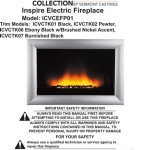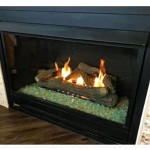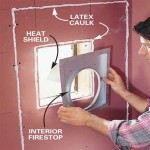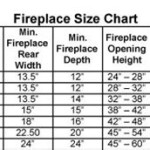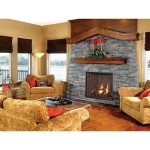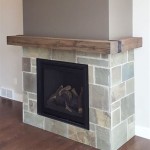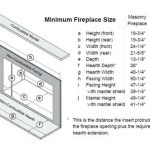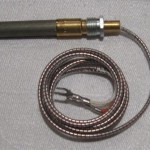```html
Volcanic Rock for Gas Fireplaces: Enhancing Aesthetics and Performance
Gas fireplaces offer a convenient and efficient alternative to traditional wood-burning fireplaces. While the flame itself provides warmth and ambiance, the visual appeal can be further enhanced through the careful selection of decorative elements. Volcanic rock, also known as lava rock, has emerged as a popular choice for gas fireplaces, offering a unique aesthetic and contributing to improved heat distribution. This article explores the properties, benefits, and considerations associated with using volcanic rock in gas fireplaces.
Volcanic rock is formed from cooled molten lava. Its porous structure allows for excellent gas permeability, facilitating efficient burning and a visually appealing flame pattern. The material's natural, rugged texture and dark coloration create a visually striking contrast against the bright flames, adding depth and dimension to the fireplace display. Furthermore, volcanic rock is highly durable and resistant to the high temperatures produced by gas fireplaces, making it a long-lasting and reliable decorative element.
The use of volcanic rock in gas fireplaces extends beyond mere aesthetics. Its porous nature and high thermal mass contribute to more efficient heat distribution. These characteristics allow the rock to absorb heat from the flames and radiate it outward, creating a more consistent and comfortable warmth throughout the room. The rock also helps to protect the gas burner from direct exposure to the flames, potentially extending its lifespan. Careful consideration should be given to the size, shape, and arrangement of the volcanic rock to maximize its performance and visual impact.
Aesthetic Enhancement and Visual Appeal
The primary appeal of volcanic rock for gas fireplaces lies in its ability to dramatically enhance the aesthetic of the appliance. Its natural, irregular shapes and deep, earthy tones provide a visually compelling alternative to traditional ceramic logs or glass beads. The contrast between the dark rock and the vibrant flames creates a captivating visual effect, transforming the fireplace into a focal point in the room.
Volcanic rock offers a raw and natural aesthetic that complements a variety of interior design styles, from rustic and contemporary to modern and minimalist. The unique texture and coloration of each rock ensure that every fireplace display is one-of-a-kind. The irregular shapes of the rock create a sense of depth and dimension, adding visual interest and preventing the fireplace from appearing flat or monotonous.
The arrangement of the volcanic rock is crucial to achieving the desired aesthetic effect. Careful placement can accentuate the flames, create dynamic patterns, and enhance the overall visual impact of the fireplace. Experimenting with different arrangements can help homeowners personalize their fireplace and create a unique focal point that reflects their individual style and preferences.
Furthermore, volcanic rock can be combined with other decorative elements, such as fire glass or ceramic logs, to create a more complex and visually appealing display. This allows for greater customization and the ability to tailor the fireplace aesthetic to specific design schemes. The versatility of volcanic rock makes it a popular choice for homeowners seeking to create a visually stunning and personalized fireplace experience.
Improved Heat Distribution and Efficiency
Beyond its aesthetic benefits, volcanic rock also contributes to improved heat distribution and efficiency in gas fireplaces. The porous structure of the rock allows it to absorb heat from the flames and radiate it outward more effectively than some other decorative materials. This creates a more consistent and comfortable warmth throughout the room, reducing temperature fluctuations and minimizing cold spots.
The high thermal mass of volcanic rock enables it to store heat for a longer period of time. This means that even after the gas flame is turned off, the rock continues to radiate heat, providing residual warmth and extending the heating effect. This can contribute to energy savings by reducing the need to run the fireplace for extended periods.
The arrangement of the volcanic rock also plays a role in optimizing heat distribution. Strategically placing the rock around the burner can help to direct the heat flow and ensure that it is evenly distributed throughout the room. Proper arrangement can also prevent the heat from being concentrated in one area, minimizing the risk of overheating and maximizing the overall heating efficiency of the fireplace.
Another benefit of using volcanic rock is that it helps to protect the gas burner from direct exposure to the flames. This can extend the lifespan of the burner by reducing the risk of damage from excessive heat. The rock acts as a buffer, absorbing some of the heat and preventing it from directly impacting the burner components.
Considerations for Safe and Effective Use
While volcanic rock offers numerous benefits for gas fireplaces, it is important to consider certain factors to ensure safe and effective use. The size and type of volcanic rock should be appropriate for the specific gas fireplace model. Using oversized or unsuitable rock can obstruct the burner, impede gas flow, and create a fire hazard.
It is crucial to purchase volcanic rock that is specifically designed for use in gas fireplaces. Industrial-grade volcanic rock may contain impurities or contaminants that can release harmful fumes when heated. Fireplace-grade volcanic rock is typically cleaned and treated to remove these impurities, ensuring a safe and healthy indoor environment.
Before using volcanic rock in a gas fireplace, it is important to consult the manufacturer's instructions and guidelines. These instructions will provide specific recommendations regarding the type, size, and arrangement of the rock. Following these guidelines will help to ensure that the fireplace operates safely and efficiently.
Regular maintenance is also essential for maintaining the performance and safety of the gas fireplace. The volcanic rock should be inspected periodically for signs of damage or deterioration. Any damaged or deteriorated rock should be replaced promptly. The fireplace burner should also be cleaned regularly to remove any debris or soot that may have accumulated.
The proper ventilation is crucial for the safe operation of any gas fireplace, including those using volcanic rock. Ensure that the fireplace is properly vented to the outside to prevent the build-up of carbon monoxide and other harmful gases. A carbon monoxide detector should be installed in the vicinity of the fireplace to provide an early warning in case of a leak.
Choosing the right size volcanic rock for your fireplace is important for both aesthetics and functionality. Smaller rocks provide more uniform heat distribution, while larger rocks offer a bolder visual statement. A mix of sizes can also be used to create a more natural and dynamic look. Avoid using rocks that are too large, as they can block the burner and impede gas flow. Always refer to your fireplace manufacturer's recommendations for sizing guidelines.
When arranging volcanic rock in your fireplace, leave sufficient space for the flames to breathe. Overcrowding the burner with rock can restrict airflow and lead to incomplete combustion, resulting in reduced heat output and potentially dangerous carbon monoxide emissions. Ensure that the burner ports are not obstructed and that the flames have ample space to spread.
```
Lava Rock Vs Fire Glass Blog Fireplace And Chimney Authority

Lava Rock 10 Things To Know About Fire Pit Rocks Buyer S Guide 2024

Lava Rock Vs Fire Glass Blog Fireplace And Chimney Authority

Fire Pit Media Lava Rock Glass Woodlanddirect Com

Lava Rock 10 Things To Know About Fire Pit Rocks Buyer S Guide 2024

Allen Roth Vented Or Vent Free Gas Log Lava Rock In The Fireplace Accessories Department At Com

Allen Roth Vented Or Vent Free Gas Log Lava Rock In The Fireplace Accessories Department At Com

Fire Pit Lava Rocks Best Way To Paint Furniture Check More At Http Testmonsterblog Com Glass Fireplace

Gas Fireplace Logset Lava Rocks Friendly Fires

Lava Rock Or Fire Glass Which Is Better
Related Posts

